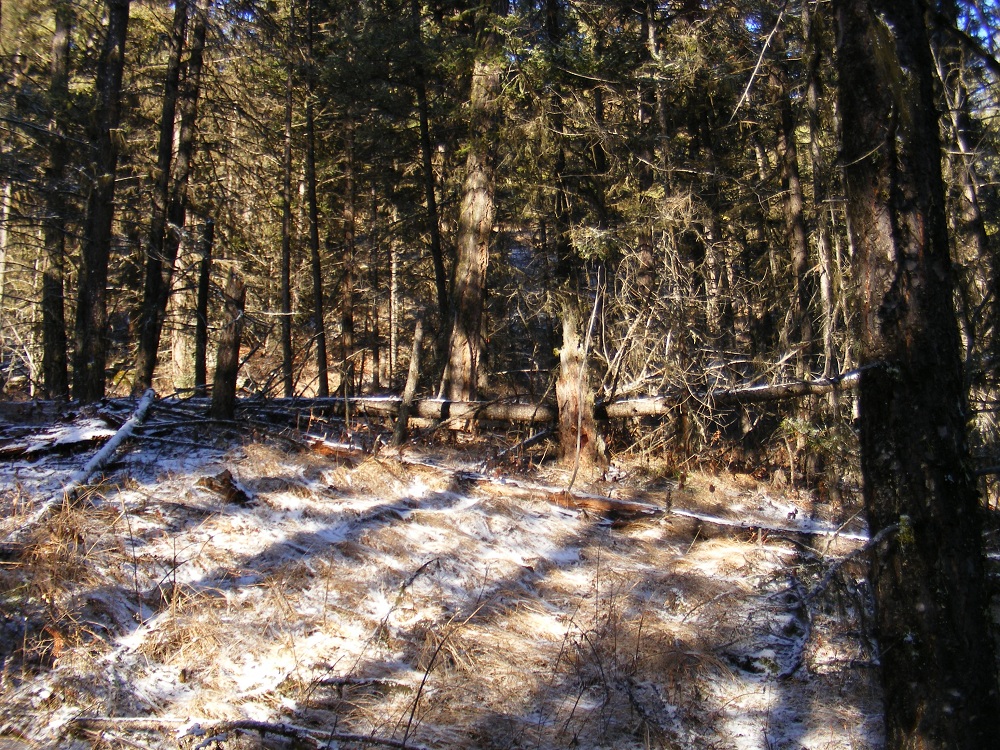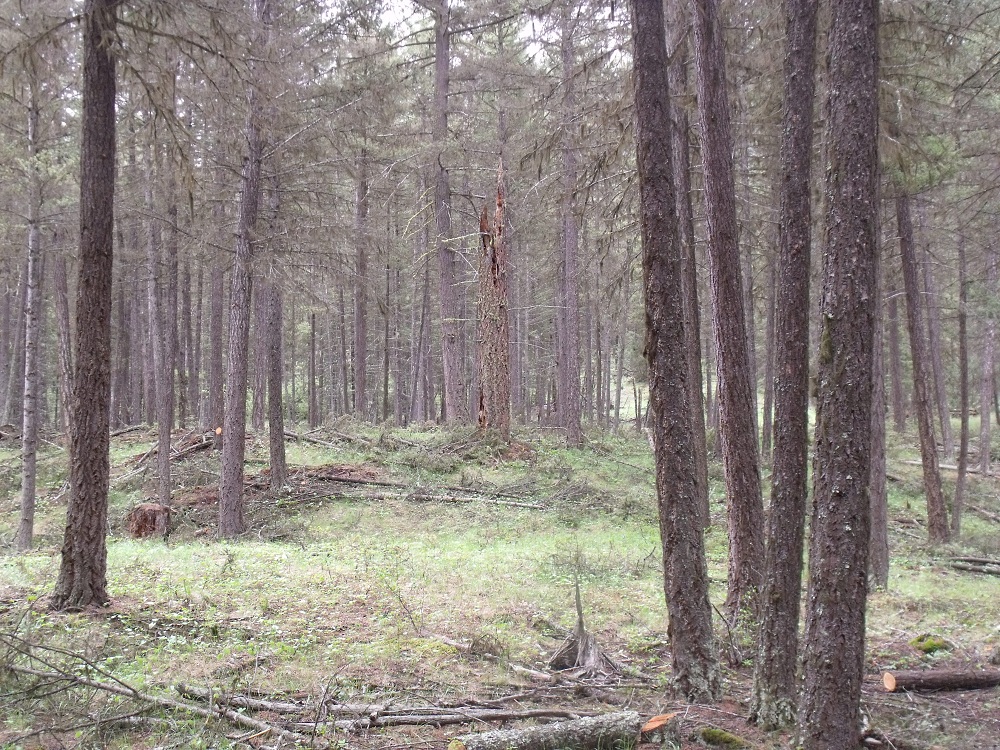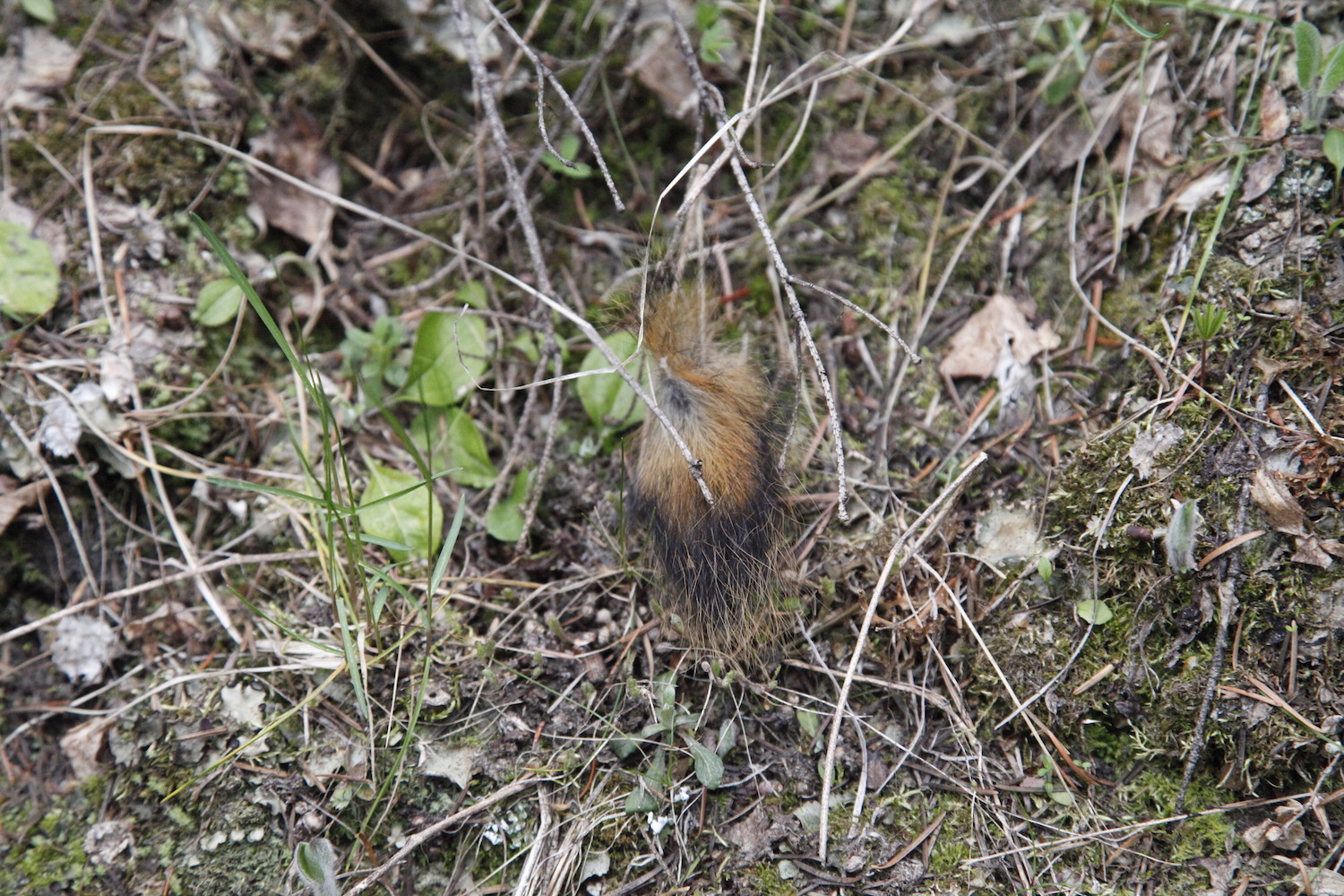Diablo Meadows
Diablo Meadows is a restoration area that represents an overstocked Douglas fir stand typical to Xaxli’p Territory. Because this forest type is common in Xaxli’p Territory, a significant amount of the eco-cultural restoration carried out in Xaxli’p Territory will be similar to the restoration of Diablo Meadows.
Diablo Meadows is a 13 hectare forested area in the relatively moist valley bottom of Fountain Valley. In the past, this type of forest would have had frequent low-intensity wildfires that burned the understory, maintaining an open forest with a healthy understory of herbs and shrubs. However, in the 1900s, British Columbia began a policy of fire suppression, and fires that started in Fountain Valley were extinguished. Because fires were no longer part of the landscape, seedlings that normally would have burned in the fires were able to grow into large trees. As an additional stress to the forest, the large old-growth trees were logged from Diablo Meadows in the mid-1900s by non-Xaxli’p companies. As a result of the logging and fire suppression, the forest was changed into a dense young stand with about 2000 trees per hectare, and no old growth trees.
Our objective at Gibbs Creek was to restore the forest structure to an open forest with clumps of old trees interspersed with forest openings of grasses, herbs and shrubs. In 2010, we carried out the restoration treatments.
Eco-cultural Restoration Prescription
The broad goals of eco-cultural restoration at Diablo Meadows are to re-establish old growth forest composition, structure and function, to restore Xaxli’p plant diversity, and to restore wildlife habitat. In 2008, the XCFC Forest Crew surveyed the forest to determine the current condition and character of the stand, and to make an estimate of the stand density and structure prior to fire suppression and logging. Based on the number of old growth stumps and remnant old growth trees in the stand, the stand density prior to fire suppression and logging (the original stand density) was estimated to be 150 to 200 stems per hectare. Because many of the trees at Diablo Meadows are potentially merchantable, the forest was not thinned to the original stand density. Instead, the forest was thinned to 400 to 650 stems per hectare, with all potentially merchantable trees left standing. Once XCFC is ready to harvest and sell timber, we will be able to carry out further thinning for timber sales and achieve the target density for eco-cultural restoration. The restoration prescription indicated the following treatment specifications:
- thin the forest to a density of 400 to 650 stems per hectare
- cut the small, unhealthy, non-merchantable trees
- retain healthy, large trees
- restore patchy and open structure of the forest by creating openings and leaving patches of large trees.
- retain deciduous trees, such as aspen and cottonwood, for species diversity and soil building
- leave trees standing beside stumps and along fallen trees.
- Thin trees out around large trees and deciduous trees
- Cut down thickets of young Douglas fir trees
- do not cut down any dead trees (snags) or damage any large fallen trees.
- prune the trees up to 5 meters
- remove all freshly fallen trees for firewood for community members



